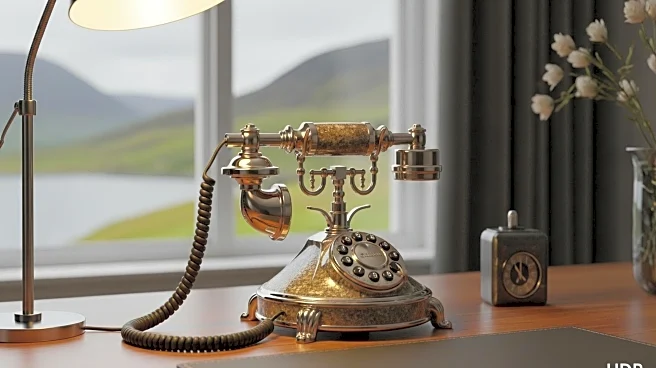What is the story about?
What's Happening?
In 1881, philanthropist Emily Fazakerley installed the first private telephone in north Wales, allowing her to listen to operatic performances from her Plas Castell mansion. The telephone was provided by the Lancashire and Cheshire Telephone Company, a subsidiary of the Bell Telephone Company, shortly after Alexander Graham Bell patented the device. Emily, known for her flamboyancy and community work, used the telephone to share opera concerts with friends through rubber ear trumpet extensions. Her installation circumvented ongoing legal disputes between the Post Office and Bell Telephone Company over telegraph monopolies. Emily's actions were part of her broader efforts to use modern innovations to benefit her community.
Why It's Important?
Emily Fazakerley's installation of the first private telephone in north Wales highlights the early adoption of technology for personal and community enrichment. Her actions reflect the transformative impact of telecommunications on society, enabling new forms of cultural engagement and social interaction. This historical event underscores the role of individual initiative in advancing technological access and community development. Emily's use of the telephone for opera listening exemplifies how technology can bridge cultural experiences, fostering a sense of community and shared enjoyment.
Beyond the Headlines
Emily Fazakerley's story illustrates the intersection of technology and philanthropy in the late 19th century. Her efforts to improve community life through modern innovations reveal the potential for technology to serve as a tool for social change. Emily's actions also highlight the challenges faced by early adopters in navigating legal and societal barriers to technological advancement. Her legacy continues to inspire discussions on the ethical use of technology for community benefit.
AI Generated Content
Do you find this article useful?













